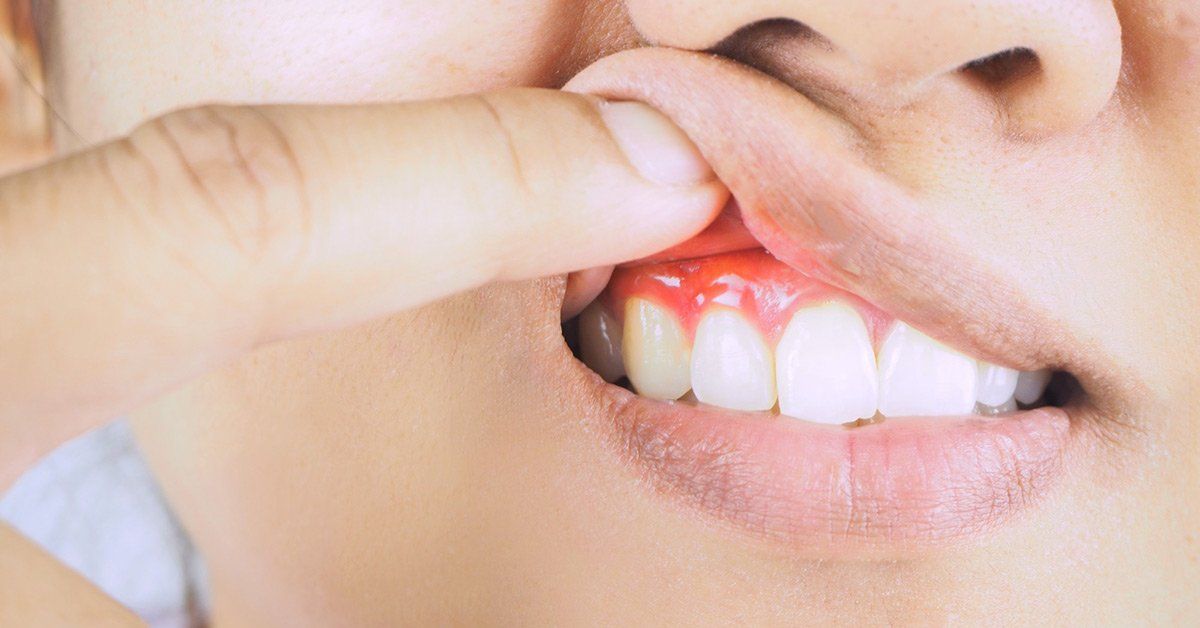Stages of Periodontal Disease
Healthy gums are the foundation to a healthy smile. Recognizing the stages of periodontal disease can help you take action as soon as possible. Learn more here.
Periodontal disease is rapid in the United States, affecting over 60% of the population. But what is the disease exactly, and what are the stages of periodontal disease you need to look for? Continue reading to learn more about this gum disease and how to protect your teeth.
What is Periodontal Disease?
Periodontal disease is an infection of the gums. However, the disease is not limited to just the gumline, but if it's severe enough, it will also affect the jaw bone. Because of periodontal disease , many people lose their teeth or need excessive dental procedures to correct the problem.
What Causes Periodontal Disease?
The primary culprit of the onset of periodontal disease is an overgrowth of bacteria caused by a lack of oral hygiene. Bacteria left on your teeth multiply and if not removed, will harden into a substance called plaque. When plaque is on the teeth for an extended period, tooth enamel wears away, and pockets form on your gumline, making a perfect way for bacteria to enter your body.
Poor oral hygiene is not the only factor for developing periodontal disease. Smoking and Other health conditions such as diabetes, genetics, certain medications, and changes to your hormones also increase your risk. It's also important to practice taking care of your gums.
Anyone can get the periodontal disease at any age, even young children.
What Are The Stages of Periodontal Disease?
Periodontal disease does not happen overnight but over time. There are four periodontal disease stages and they develop at different times. It's important to note each one so you can receive proper treatment.
Here are the stages of gum disease.
Gingivitis
Gingivitis is the first stage of periodontal disease. At this stage, there is usually no pain or symptoms, which makes gingivitis hard to spot unless you're frequently visiting your dentist.
Some symptoms of gingivitis may be:
- Bleeding gums while brushing or flossing
- Bad breath
- Gum swelling
The good news is that with the right treatment and continued oral hygiene at home with a periodontal toothpaste and other recommended products from your dentist, gingivitis is treatable. At this point, gingivitis is still on the surface and has not proceeded to damage any further bone or tissue. Make sure you continue your visits to your dentist to prevent further stages of periodontal disease.
Slight Periodontal Disease
Slight periodontal disease, or periodontitis, has spread to the jaw bone and is now irreversible due to the damage it's inflicted on bone tissue. If gingivitis is not evaluated, pockets will continue to form on the gum line, leaving space for more bacteria to mingle and destroy the bone. This is the beginning of the slight periodontal disease.
Some signs and symptoms of slight periodontal disease are similar to gingivitis, but maybe more pronounced:
- Bleeding while brushing or flossing
- Bad breath
- Swelling of the gums
- Deeper probing depth, which measures the periodontal pockets on your gums
Even though the slight periodontal disease is irreversible, you can manage periodontal disease at this stage. You will likely have treatments that are more involved than merely continuing oral hygiene practices, which are still necessary, but ineffective at treating it.
Moderate Periodontal Disease
In stage three, moderate periodontal disease, it's starting to affect other parts of the body. While you're likely to experience much of the same symptoms as in the first two stages, there may be deeper probe depths. This means the bacteria can enter your body and start infecting your bloodstream, and you experience more bone loss.
Some signs and symptoms of moderate periodontal disease are:
- Bleeding and pain when brushing or flossing
- Puss
- Deeper pockets in the gumline
- Bad breath
Treatment for moderate periodontal disease and sometimes slight periodontal disease involves a procedure called root planing and scaling. During these procedures, the dentist removes plaque that's deep within your gums and teeth to prevent further damage. If you have diseased tissue, the dentist may use laser treatment to remove it as well or prescribe an antibiotic that fights the bacteria.
Seeing your dentist for root planing and scaling is essential if you want to stop the progression of periodontal disease at this stage, which will result in the movement of teeth, tooth loss, more injury to the bone, and continued gum bleeding.
Advanced Periodontal Disease
The last stage is an advanced periodontal disease in which the disease has progressed significantly and gum recession is serious. At this stage, the bacteria are aggressive and bone loss is imminent. This means you'll lose teeth, have a sensitivity to cold and hot temperatures, and experience chronic bad breath known as halitosis.
Furthermore, other complications arise from advanced periodontal disease. Because the depth of the gum pockets is now deeper than ever, bacteria produce inflammation in the body which can lead to stroke, heart attack, diabetes, some cancers, and the possibility of needing dentures or other restorative dentistry.
Treating advanced periodontal disease may consist of a variety of different approaches. Because this stage is so advanced, your dentist may suggest surgery to scale your gums or do a bone graft to stop further bone loss. The dentist may also do a laser cleaning as well to rid your teeth of all the plaque and bacteria that are causing the disease.
Preventing Periodontal Disease
The stages of periodontal disease escalate quickly without proper oral hygiene and routine visits to your dentist. Incorporating these practices into your life ensures healthy mouth and gums for life.
Are you worried that you may have a stage of periodontal disease? Contact our office today so we can schedule an appointment for you!


